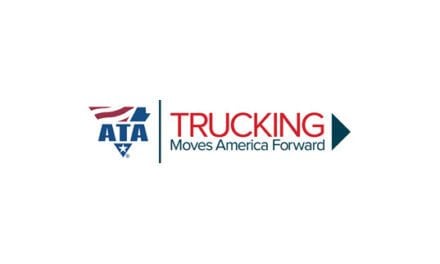When Gen Z joins the family business, different expectations can collide.
By John Kimmel
“Life is never boring, because there is always something I can do on my phone.” This is the mantra of the newest, and for many, the most frustrating generation in the workforce. Generation Z seemingly sees the world differently than everyone else, but is there really something unique about Gen Z, or is this just more of the generational differences that have separated the young from the old for all of history?
Something indeed has changed, and it is worth taking the time to understand exactly what that is and what that means, especially at work.
Nationally, our workforce can be divided into five generations. The Silent Generation, people born between 1928 and 1945, still make up 2% of the workforce. They lived through the Great Depression and WWII, and are quick to remind us of those facts, especially if the conversation we are having with them revolves around resolve, grit or the unflappable determination that is the hallmark of this group.
Our industry is unique because so many of the petroleum marketers in the United States are multigenerational family businesses. That means that grandma and grandpa, even though they are in their eighties, are still coming into the office. In some cases, they are still the primary decision-makers. They might even sign your check.
Although many Baby Boomers, born between 1946 and 1964, are already enjoying their retirement, about 19% of the workforce falls in this category. Their generation is defined by the first man walking on the moon and the Vietnam War. While in many ways this generation rebelled against the idea of living their lives the same way that their parents had done, when it came to work, they were very much the same. Hard work, long hours and dedication to family are what make the Boomers tick, and they are quick to let you know if you ask for a three-day weekend or to leave the office early on a Friday afternoon.
Generation X, or Gen X for short, were born between 1965 and 1980, and they represent about 35% of the workforce. While the Cold War and MTV certainly had an impact on this generation, when it comes to the workplace, two factors were very different for them. First, women in the workplace were no longer an anomaly, it was the norm. Second, divorce was becoming common.
For those of us in Gen X who grew up in a family business, it often meant going to work at a very early age. Ironically, when we got old enough to start having children of our own, we were much softer on discipline than the generations that had come before us. Think time-out instead of spanking with a belt. We also started a new trend, where our children did not come to work as young as we did. Some Gen X parents even waited until after high school or college to introduce their kids to the business.
That leads us to Generation Y, a.k.a. Millennials. Born between 1981 and 1996, they are the largest group in the workplace at 39%. If any one factor shaped this generation, you could make the argument that it was the rise of social media. In addition, something very different occurred socially with this generation. For centuries, young people had always wanted to be different than their parents, and a little rebellion was normal, especially in the teenage years and in the early twenties. Even so, the older each generation became, the more they acted like their parents. For example, while it was not unusual for an 18-year-old to say they wanted to travel the world and remain single forever, it was equally as unusual for that same person not to have settled down and started a family just a decade or two later.
With Millennials, this didn’t happen. While getting married and having children was almost universally considered as necessary to live a fulfilling life by the Silent Generation, only 15% of Millennials feel the same way. This underlying philosophy created a shift in how Millennials view work. No longer are 60-hour weeks necessary to provide for a family, as fewer hours can provide for an individual.
The newest and smallest segment of the workforce is Generation Z. Born between 1997 and 2012, they are already over 6% of the workforce. This group of people does not remember a world without smartphones, and texting is at least as common for them as talking face to face. Due to the influence of social media and a digital educational environment, these young people are less likely to embrace the political and social standards of their local geography and are more likely to have adopted a more global view of the world, and this includes the workplace. It is now commonplace for a 20-year-old in Cleveland to point to the number of hours the average person works in Western Europe as an argument to work fewer hours here in the United States. In a report released just a couple of months ago, the average Gen Z worker was working only 29 hours per week, and not trying to increase that number. Additionally, Gen Z workers expect more of what they refer to as work-life balance.
Here is where the situation gets very complicated. If you ask a 60-year-old what work-life balance means, you are likely to hear something like making sure that you have a work schedule that allows you to see some of your kids’ school activities from time to time. Essentially, this generation sees work as the primary activity that adults engage in until they retire. Personal time is a coveted bonus. Generation Z views the world from a completely different angle. They believe that the primary activity that adults engage in is personal in nature, i.e., whatever makes them happy. Work is something that one does just enough to live whatever lifestyle that person desires. I was recently interviewing an employee for a petroleum marketer who called her supervisor a slavedriver because the boss expected this young lady not only to work for 40 hours per week, but insisted that she do it in the office instead of doing the work remotely.
One can imagine how this kind of attitude can cause a problem when grandfather and grandson are having a conversation about work expectations in the family business. Keep in mind that all these illustrations are generalizations, of course, and there are always exceptions to the rule.
The biggest idea that I hope you take away from this article is that the underlying motivation for people in the workplace has changed, as have the expectations. There are now huge differences in the way people see work, how much effort is applied to work and even why people go to work. If you want to have clarity and understanding about what each team member is responsible for delivering, then your business will need to learn to communicate differently to different team members, based at least partially on their age. If we seek first to understand and are willing to engage in open dialog, then we are far more likely to create a workplace that serves all members of the family and the team.
 John J. Kimmel is the author of Selling with Power. Kimmel provides custom solutions to increase the effectiveness and profitability of sales teams for petroleum marketers all over the United States. Visit www.johnjkimmel.com.
John J. Kimmel is the author of Selling with Power. Kimmel provides custom solutions to increase the effectiveness and profitability of sales teams for petroleum marketers all over the United States. Visit www.johnjkimmel.com.









